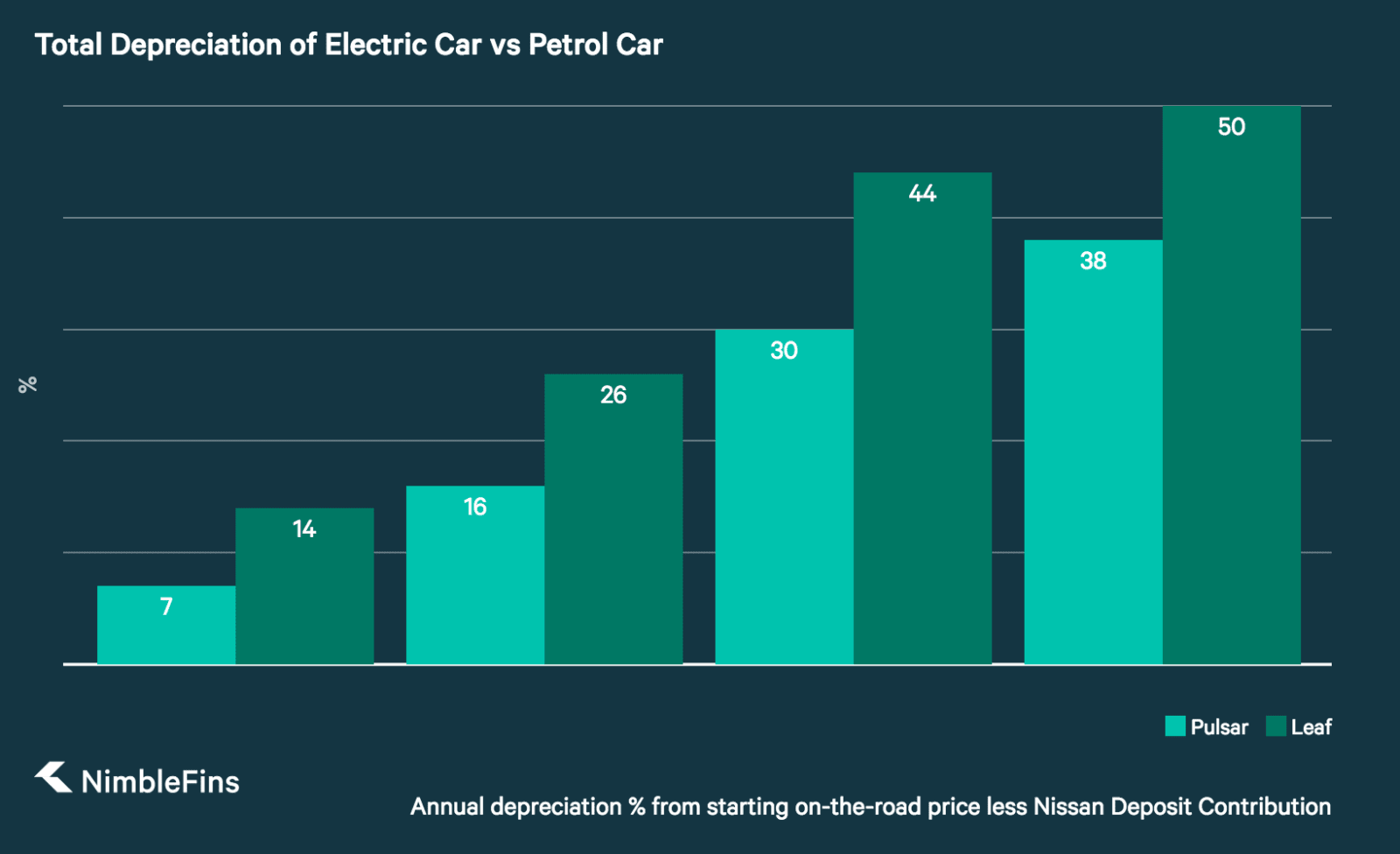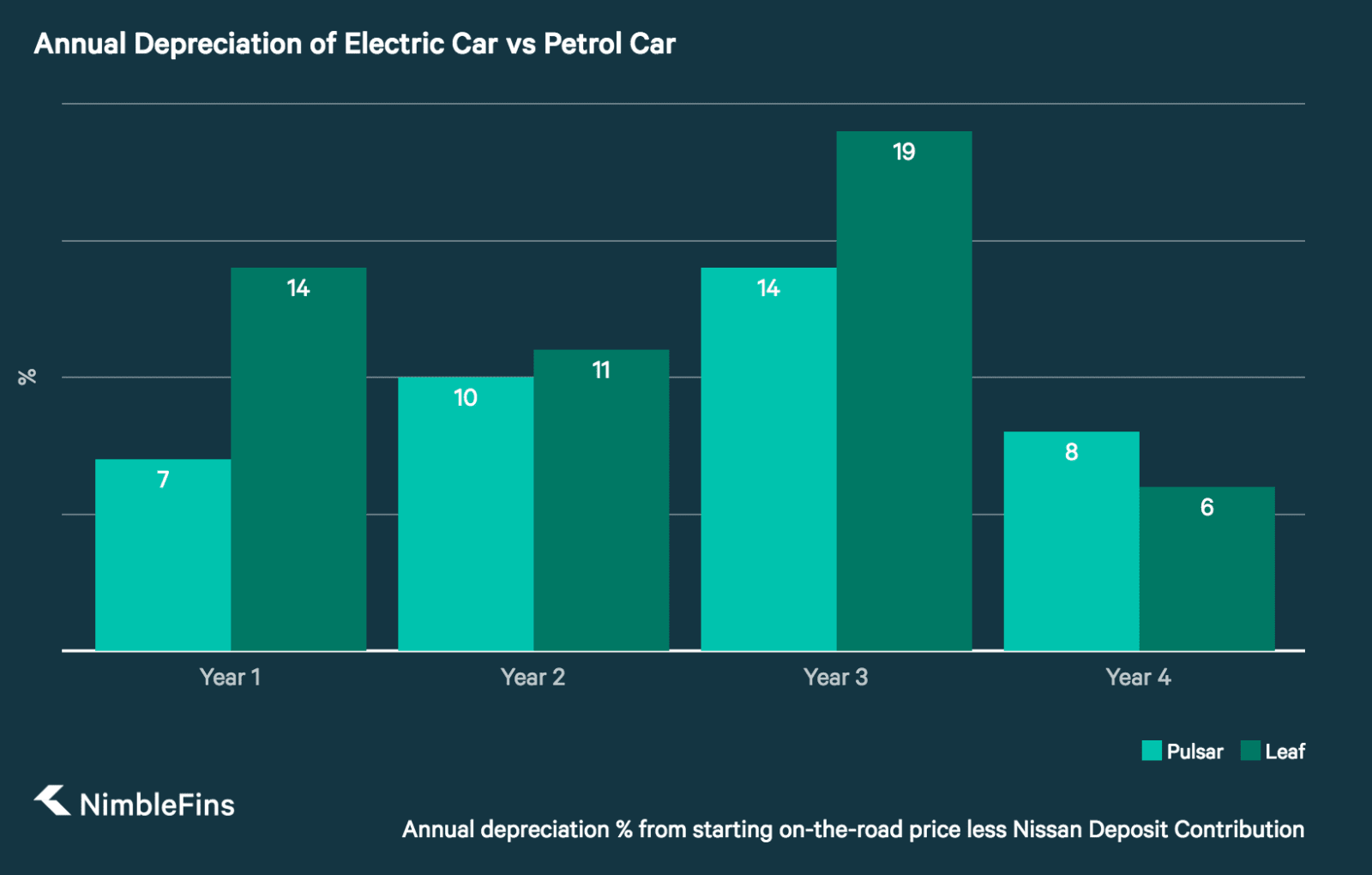Nissan Leaf vs Nissan Pulsar: How Much Faster is Depreciation on an EV than an ICE?
When considering an electric car, potential owners may worry about the depreciation on an EV. There is a general perception that EV’s depreciate faster than internal combustion engine (ICE) cars – is it true?
Like mobile phone batteries, EV battery technology is constantly evolving. While improvement in battery capacity results in longer ranges on new models, consumers may worry that older models will lose value more quickly in the face of this better technology. We’ve delved into the data to evaluate depreciation on the UK’s most popular EV the Nissan Leaf vs the comparable ICE Nissan Pulsar, to understand how much faster an EV depreciates than an ICE.
The EV Depreciates Faster than the ICE
By the fourth year of ownership, the Nissan Leaf depreciated 32% faster than the Nissan Pulsar. Most years, the Leaf only lost a few percentage points of value more than the Pulsar, but over many years this difference becomes significant. In four years the Leaf was valued 50% less than the initial price paid; the Pulsar had lost 38% of its value. This is not such a surprise as the Leaf's range increased a good 25% with the introduction of a larger 30 kWh battery in 2016.

Annual Depreciation
In the first four years, the Leaf lost between 6% and 19% of the initial price each year. Perhaps surprisingly, the largest hit occurred in the 3rd year of ownership. We suspect this is because many Leaf’s are bought on a 3-year finance option. At year 3, drivers hand back their car to the dealer, who then sells the car as used. The resulting supply of 3-year old cars would suppress prices in this age bracket. In addition, a larger 30kWh battery was introduced for the the 2016 model year cars, effectively extending the range by over 25% and making the 2014/15 models less desirable.
In contrast, the Pulsar lost less value, between 7% and 14% per year and also experienced the largest drop in value for 3-year old cars. By the 4th year, the Leaf actually held its value better than the Pulsar.

Should an EV Depreciate Faster than an ICE?
Yes and no. Whether or not range apprehension is warranted, it is likely a contributing factor to an EV’s depreciation. It is true that larger, more efficient batteries on new models render older models less attractive with their shorter ranges.
Another factor that may contribute to an EV’s loss of value is foreboding that an older battery will either call it quits or suffer significantly reduced capacity. Given a battery replacement will cost £5k or more, we understand the concern.
We’ve analysed survey data from Plugin America that shows an average three-year-old Nissan Leaf will still supply 11.2 bars out of the original 12 bars of battery capacity. We estimate that 11 bars would still supply around 68 miles on the 24 kWh battery and 110 miles on the 30 kWh battery, a reduction of 15% of initial range. Perhaps batteries do not deteriorate as badly as people might think. The new 2018 model will drive even further owing to its larger 40 kWh battery—around 120 miles for a Leaf with 50,000 miles on the odometer or, by age, 150 miles for a three-year-old Leaf on average. These projections are further discussed in our original study and also highlighted in an article at Torque News.
Are Used EV’s a Good Deal?
It depends on your range needs. If you only want a car for city driving and can recharge each night, you might be perfectly happy with a three-year-old battery that only drives 85 miles instead of a new battery than can drive over 100 miles, for instance. If you anticipate using the car for long motorway journeys, you may suffer with a used EV.
Methodology
We gathered asking price data on hundreds of used Nissan Leafs and Nissan Pulsars, considering the popular Tekna trim for both, for cars registered between 2014 and 2017 and sporting the popular Tekna trim. Depreciation was calculated as a percentage drop from the initial price. The initial price we used for each car was the current starting on-the-road (OTR) price less the current Nissan Deposit Contribution as found in Offers on the Nissan website. As of July 2017, these discounts stood at £4,000 for the Leaf and £2,750 for the Pulsar. For the Leaf, the OTR price reflects the £4,500 government grant.
